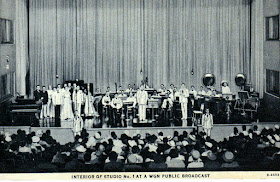 |
| LEFT: At the southwest corner of LaSalle and Lake streets stood this quite splendid building, the first home of The Tribune—one room on an upper floor in 1847. CENTER: The Tribune’s second home was above Gray’s grocery store on the northwest corner of Lake and Clark streets in 1849. RIGHT: The third Tribune home in the old post office building in May, 1850. |
Daily circulation grew from about 1,400 papers in 1855 to as high as 40,000 during the Civil War (1861-1865), when the paper was a strong supporter of President Lincoln and emancipation.
In July of 1847, 20,000 visitors from across the nation streamed into Chicago (population 16,000) for the Rivers and Harbors Convention, foreshadowing the city's future as a convention center. The visitors would leave impressed with Chicago's potential.
It was an opportune time to start a newspaper. But James Kelly, a leather merchant, and two newspapermen, John E. Wheeler and Joseph K.C. Forrest, almost certainly did not foresee Chicago's quick population growth. For them, opening the city's third newspaper, the Chicago Daily Tribune, gave them a source of ready-to-reuse news stories for their literary weekly, The Gem of the Prairie, begun in 1844 and folded in 1852.
The first issue of the Tribune (now lost) consisted of four pages. Four hundred copies were printed on a hand press in the paper's humble office on the third floor of a wooden building at La Salle and Lake Streets.

The city's first newspaper, the Chicago Democrat, founded in 1833, took no notice of the newcomer. However, the Chicago Journal welcomed the Tribune to "the stormy sea" of Chicago journalism.
Within six weeks of opening, the founding partners hit rough water. Kelly quit because of failing eyesight. Forrest pulled out in September of 1847, questioning the wisdom of his $600 investment. Wheeler, the editor, bowed out in 1851. But as the city grew, so did the Tribune's circulation, reaching 1,800 by 1851.
Ownership would change hands several times, but the paper's politics remained constant. The Tribune supported anybody who was not a Democrat; i.e., the Whigs, Free Soilers and even members of the short-lived Know-Nothing Party received the papers attention.
That stance differed dramatically from the first Chicago Tribune, A Democratic Weekly launched in 1840 to support a second term for President Martin Van Buren. It followed Van Buren's lead and the Democratic Weekly folded after a year. Like the first adhesive United States postage stamp, also introduced in 1847, the second Chicago Tribune Newspaper would stick.
Between the 1910s and the 1950s, the Tribune prospered under the leadership of Medill's grandson Robert R. McCormick. Calling his operation "World’s Greatest Newspaper," McCormick succeeded in raising daily circulation from 230,000 in 1912 to 650,000 by 1925, when the Tribune stood as the city's most widely read paper. In 1925, when it moved into the Tribune Tower on North Michigan Avenue, the paper employed about two thousand men and women. During the 1930s and 1940s, McCormick used the Tribune's editorial pages to attack the New Deal and promote isolationism and anti-Communism.
After McCormick died in 1955, the Tribune moved toward a more moderate (if still Republican) editorial stance, as it increasingly became the product less of individual personalities than of a large business corporation. Meanwhile, the Tribune's younger media cousins were growing faster than the newspaper itself. This development had begun under McCormick, who oversaw the founding of WGN (after “World's Greatest Newspaper”) radio in 1924 and WGN television in 1948. By the end of the twentieth century, when the newspaper's parent company (the Tribune Company) was a national media giant that employed close to six thousand Chicago-area residents, the future of traditional print dailies was uncertain. Nevertheless, the Tribune, now available in electronic form, continued to be Chicago's leading newspaper.
 |
| The Tribune Building, SE corner of Madison and Dearborn Streets, Chicago, 1869-1871. |
In 1922 the Chicago Tribune hosted an international interior and exterior design competition for its new headquarters to mark its 75th anniversary, and offered $100,000 in prize money with a $50,000 1st prize for "the most beautiful and distinctive office building in the world". The competition worked brilliantly for months as a publicity stunt, and the resulting entries still reveal a unique turning point in American architectural history. More than 260 entries were received.The winner was a neo-Gothic design by New York architects John Mead Howells and Raymond Hood, with buttresses near the top.
 |
| The Chicago Tribune Tower today. |
The Tribune Tower, built in 1923-25, is a neo-Gothic skyscraper located at 435 North Michigan Avenue in Chicago. It was the home of the Chicago Tribune, Tribune Media, and Tronc, Inc., formerly known as Tribune Publishing. WGN Radio broadcasts from the building, while the ground level houses the large restaurant Howells & Hood, named for the building's architects. It is listed as a Chicago Landmark on February 1, 1989, and is a contributing property to the Michigan–Wacker Historic District.
WGN Radio Station (720 kHz AM) started when Colonel Robert McCormick transformed his fledgling radio station into WGN on June 1, 1924, inspired by the motto of his Chicago Tribune Newspaper as “World’s Greatest Newspaper.” The predecessor to WGN was WDAP, which signed on the air on May 19, 1922, and was founded by Thorne Donnelley and Elliott Jenkins.
Originally based in the Wrigley Building, the station moved its operations to the Drake Hotel in July. On May 12, 1923, the Zenith Radio Company signed on radio station WJAZ from the Edgewater Beach Hotel. However, after this brief period, the Tribune switched its operations to WDAP, and the Zenith station became WEBH, the license eventually being deleted on November 30, 1928. WGN's main studio in the Tribune Tower, 1930s -1940s which could seat 600 people.

Compiled by Neil Gale, Ph.D.

No comments:
Post a Comment
The Digital Research Library of Illinois History Journal™ is RATED PG-13. Please comment accordingly. Advertisements, spammers and scammers will be removed.